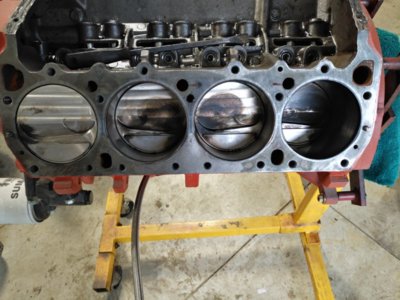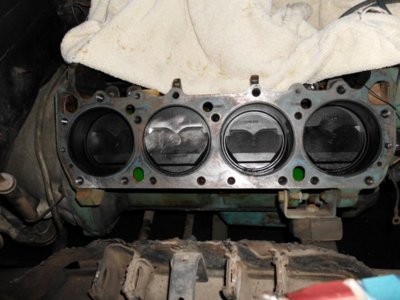David Stillie
Well-Known Member
I took the heads off an 440 engine I got with a project car. The pistons are installed backwards! This engine was built by a professional machine shop and was broken in on their dyno. The pistons are KB Hypereutectic quench dome. The was no contact with the valves, probably due to the generous valve reliefs and mild cam. My question is, is it possible that this was done on purpose? They only advantage I can guess is the ability to use a closed chamber head. I have open chamber iron heads so I will be pulling them out and installing them properly, although my quench distance will be over .060"



















